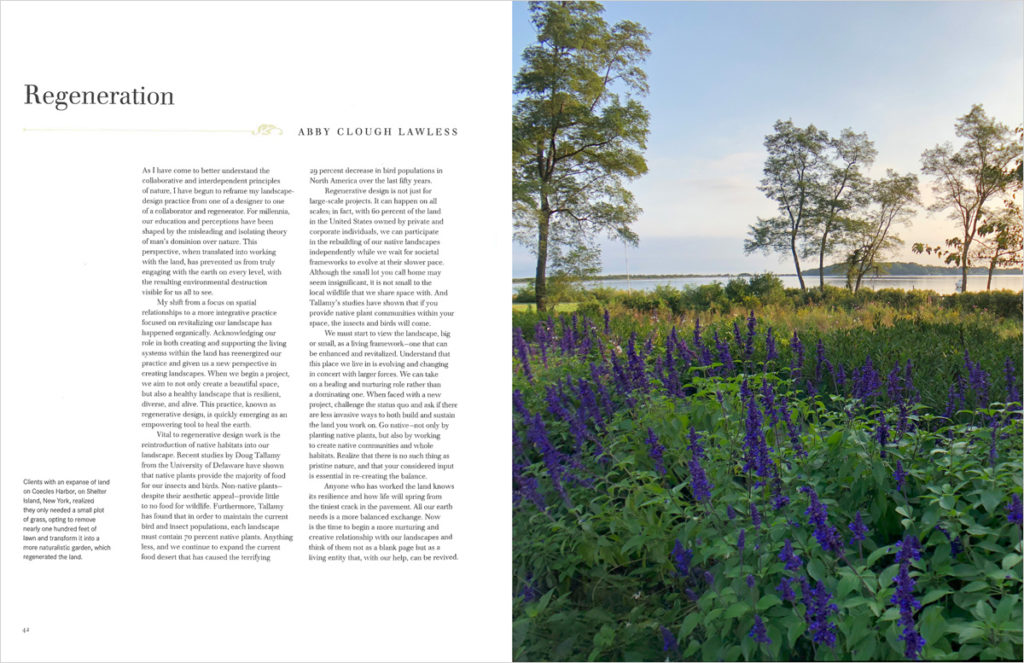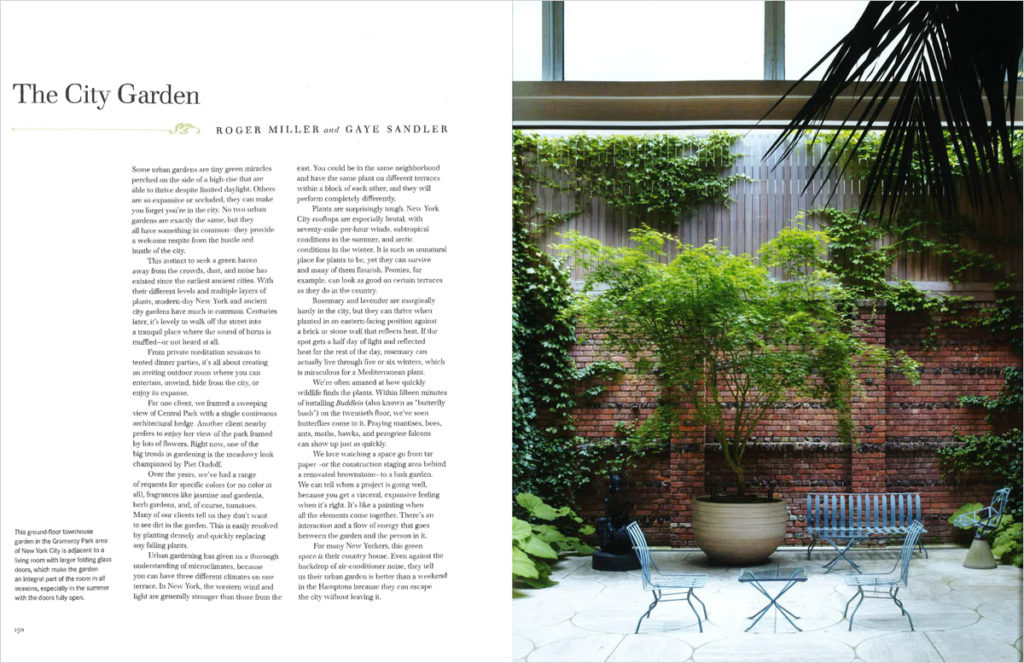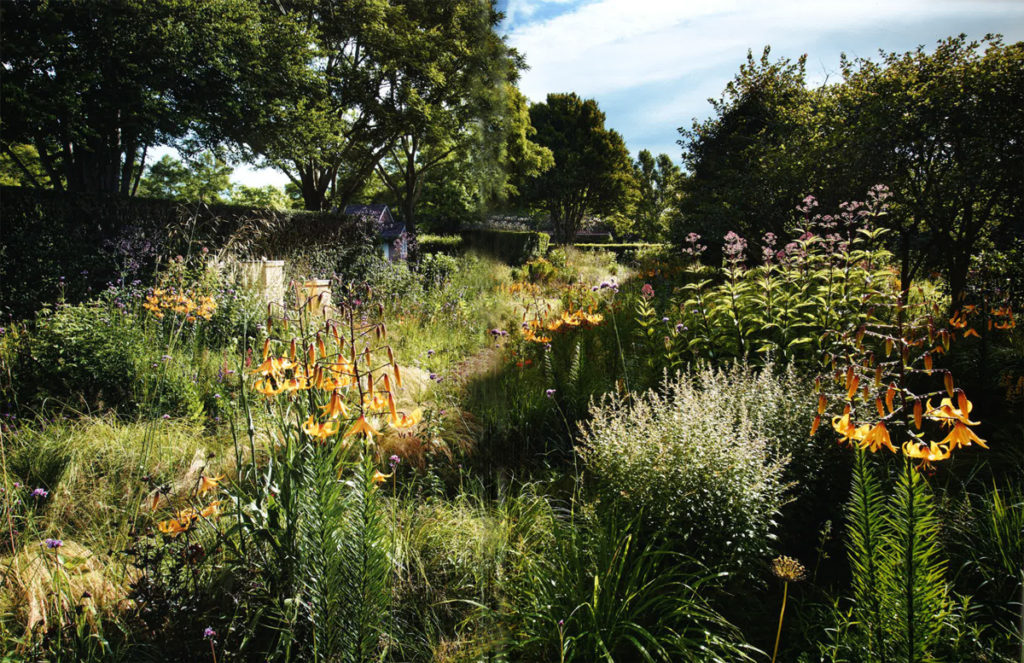

- Abby’s essay on regeneration invites you to reconsider your relationship with the land.> Read Article
Regeneration
Abby Clough LawlessAs I have come to better understand the collaborative and interdependent principals of nature, I have begun to reframe my landscape design practice from one of a designer to one of a collaborator and regenerator. For millennia, our education and perceptions have been shaped by the misleading and isolating theory of man’s dominion over nature. This perspective, when translated into working with the land, has prevented us from truly engaging with the earth on all levels, with the resulting environmental destruction visible for us all to see.
Acknowledging our role in both creating and supporting the living systems within the land has re-energized our practice and given us a new perspective in creating landscapes. When we being a project, we aim not only to create a “beautiful” space but it must be a healthy landscape that is resilient, diverse and alive. This practice, known as regenerative design, is quickly emerging as an empowering tool to heal the earth.
Vital to regenerative design work, is the reintroduction of native habitats into our landscape. Recent studies by Doug Tallamy from the University of Delaware, has shown that native plants provide the majority of food for our insects and birds. Non-native plants- despite their aesthetic appeal provides little to no food for wildlife. He has found that in order to maintain the current bird and insect populations each landscape must contain 70% native plants. Anything less and we continue to expand the current food desert that has caused the terrifying 29% decrease in bird populations in the North America the last half of this century.
Regenerative design is not just for large-scale projects. It can happen on all scales; in fact with 60% of the land in United States owned by private and corporate individuals, we can participate in the rebuilding of our native landscapes independently- while we wait for the slower pace of societal frameworks to evolve. Although the small lot you call home may seem insignificant, it is not small to the local wildlife that we share space with. And Doug’s studies have shown, that if you provide native plant communities within your space, the insects and birds will come.
We must start to view the landscape, big or small, as a living framework, one that can be enhanced and revitalized. Understand that this place we live in: is evolving and changing in concert with larger forces. We can take on a healing and nurturing role rather than a dominating one. When faced with a new project, challenge the status quo and ask if there are less invasive ways to both build and sustain the land you work on. Go native—not only by planting native plants, but by working to create native communities and habitats. Realize that there is no such thing as pristine nature, and that your considered input is essential in re-creating the balance.
Anyone who has worked the land knows its resilience, and how life will spring from the smallest crack in the pavement. All our earth needs is a more balanced exchange. Now is the time to begin a more nurturing and creative relationship with our landscapes and think of them, not as a blank page but as a living entity that with our help, will revive.


